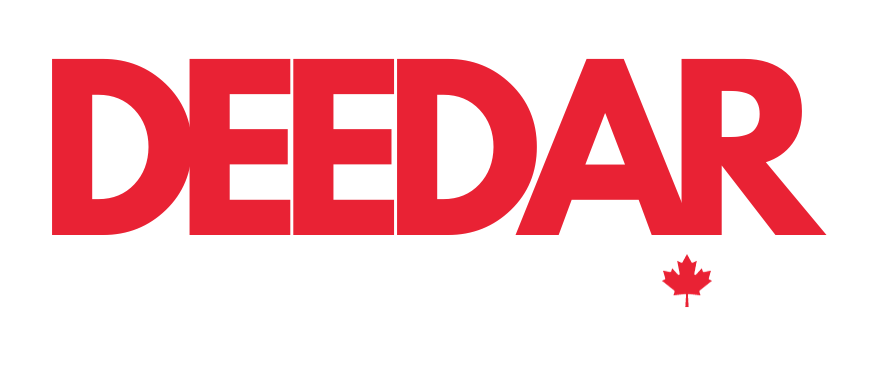As we move into 2025, aligning your B2B marketing with the latest trends is essential. The landscape is constantly evolving, and staying ahead is key to capturing attention in a crowded market. A recent study revealed that podcasts have become even more prominent, with 50% of B2B decision-makers tuning into at least three shows weekly. This trend highlights the growing need to adapt to changing consumer behaviors.
Unraveling the Complexities of B2B Advertising in 2025
The core principle of B2B marketing remains: “Understand your audience.” With diverse industries and decision-makers in play, segmentation becomes more vital than ever in reaching the right audience with the right message.
B2B companies often deal with segmented markets, and in 2025, this trend continues to dominate advertising strategies. Personalizing marketing efforts based on segmented data not only ensures relevance but also helps you stand out in a competitive space.
Why Market Segmentation Matters More in 2025
Market segmentation in B2B offers significant advantages. It allows you to focus on specific buyer groups, enabling customized messaging that resonates. Here are a few key benefits of segmentation in 2025:
- Increased Personalization: Targeted ads that speak directly to each segment’s needs increase conversion rates.
- Improved ROI: By directing resources toward high-value segments, you maximize returns.
- Gaining a Competitive Edge: In 2025, successful marketers are those who identify and tap into underserved niches, staying ahead by reclaiming overlooked markets.
Mastering the B2B Buyer’s Journey in 2025
The B2B buyer’s journey is inherently complex, differing greatly from the B2C process. A 2024 Databox study found that the time it takes to close a sale has increased to 45 days or more, underscoring the need for a strategic approach that nurtures leads through each phase.
The journey is non-linear, with multiple decision-makers often involved. Recognizing the seven stages of this journey and adapting your strategy accordingly is critical:
- Awareness: The prospect realizes they have a problem.
- Interest: They begin exploring potential solutions.
- Consideration: Various solutions are evaluated.
- Intent: They show clear intent to make a purchase.
- Evaluation: The final vendors are assessed.
- Purchase: The transaction is completed.
- Customer Retention: Ongoing efforts to turn clients into loyal customers.
In 2025, aligning your marketing with these stages is vital. Use personalized messaging during the awareness phase and tailored assistance during the consideration and evaluation phases to guide prospects toward conversion.
Sharpening Target Precision in 2025: Buyer Personas and Market Research
Creating buyer personas and conducting thorough market research are indispensable tools for connecting with your audience. Here’s how you can improve these tactics in 2025:
- Develop Detailed Personas: Dive deeper into job roles, industries, pain points, and motivations. Understanding these aspects helps craft messaging that addresses specific challenges faced by each persona.
- Customer Interviews and Feedback: Continuously engage with existing clients to understand what’s working. Feedback from customer service teams can reveal areas of improvement and untapped opportunities for 2025.
- Competitor Analysis: Analyze customer reviews and content from competitors to pinpoint gaps in their strategies. Address these gaps in your own marketing to set yourself apart.
Exploring B2B Marketing Channels in 2025: Finding the Right Mix
Choosing the right marketing channels is pivotal. In 2025, several avenues remain dominant, while some emerging trends are gaining ground:
- Blogs: Continue to provide in-depth blog content. Focus on SEO by incorporating up-to-date keywords and including relevant links. Blogging remains one of the best tools for organic search rankings.
- Emails: Email marketing remains crucial, but personalization is key. Use data to tailor messages, increasing the likelihood of engagement.
- Podcasts: With the rise of podcasts, creating or sponsoring podcasts can position your brand as a thought leader in your industry.
- Digital Ads: Pay-per-click (PPC) campaigns should focus on retargeting and personalization in 2025. Data-driven insights allow for precise ad targeting, ensuring you’re reaching decision-makers at the right time.
- Events: Both physical and virtual events are still powerful tools. Hosting or attending industry-specific webinars, conferences, or workshops gives you valuable face time with potential clients.
- Voice Search: With the growth of smart assistants, optimizing for voice search is a must. Use natural language in your content, and ensure your SEO strategy includes long-tail, conversational keywords.
New Trends for 2025: AI and Personalization
In 2025, AI-driven marketing will become more widespread. AI tools can now analyze customer behavior, predict trends, and suggest personalized content. Leveraging AI for personalized email campaigns or dynamic ads can significantly boost engagement and conversions.
Moreover, interactive content such as quizzes, polls, and interactive infographics will continue to attract attention. These tools increase user engagement and provide valuable insights into your audience’s preferences.
Conclusion: Achieving B2B Success in 2025
In 2025, success in B2B marketing requires a finely tuned, multifaceted approach. Start by understanding your audience’s journey and segmenting your market effectively. Develop detailed buyer personas, conduct regular market research, and optimize your campaigns for personalization.
As you plan your marketing mix, focus on proven channels like blogs, emails, digital ads, and events, but don’t neglect newer trends such as AI, podcasts, and voice search. These will help keep your brand relevant in the fast-evolving landscape.
Lastly, continuously adapt. B2B marketing in 2025 is all about staying nimble, learning from data, and fine-tuning your strategies for success.
Also Check : Digital Marketing for Electricians: Boost Your Business with Proven Strategies



